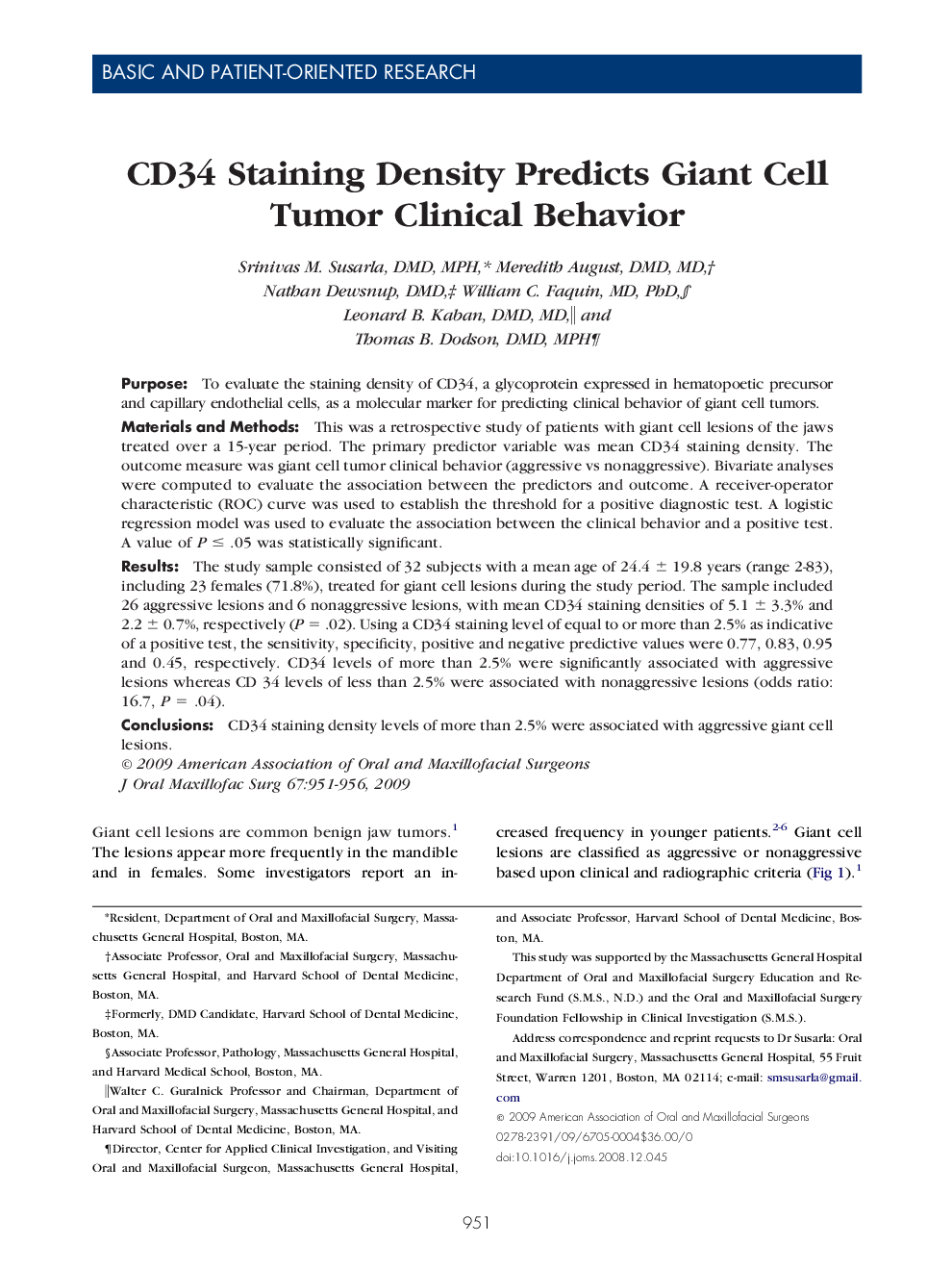| Article ID | Journal | Published Year | Pages | File Type |
|---|---|---|---|---|
| 3154178 | Journal of Oral and Maxillofacial Surgery | 2009 | 6 Pages |
PurposeTo evaluate the staining density of CD34, a glycoprotein expressed in hematopoetic precursor and capillary endothelial cells, as a molecular marker for predicting clinical behavior of giant cell tumors.Materials and MethodsThis was a retrospective study of patients with giant cell lesions of the jaws treated over a 15-year period. The primary predictor variable was mean CD34 staining density. The outcome measure was giant cell tumor clinical behavior (aggressive vs nonaggressive). Bivariate analyses were computed to evaluate the association between the predictors and outcome. A receiver-operator characteristic (ROC) curve was used to establish the threshold for a positive diagnostic test. A logistic regression model was used to evaluate the association between the clinical behavior and a positive test. A value of P ≤ .05 was statistically significant.ResultsThe study sample consisted of 32 subjects with a mean age of 24.4 ± 19.8 years (range 2-83), including 23 females (71.8%), treated for giant cell lesions during the study period. The sample included 26 aggressive lesions and 6 nonaggressive lesions, with mean CD34 staining densities of 5.1 ± 3.3% and 2.2 ± 0.7%, respectively (P = .02). Using a CD34 staining level of equal to or more than 2.5% as indicative of a positive test, the sensitivity, specificity, positive and negative predictive values were 0.77, 0.83, 0.95 and 0.45, respectively. CD34 levels of more than 2.5% were significantly associated with aggressive lesions whereas CD 34 levels of less than 2.5% were associated with nonaggressive lesions (odds ratio: 16.7, P = .04).ConclusionsCD34 staining density levels of more than 2.5% were associated with aggressive giant cell lesions.
